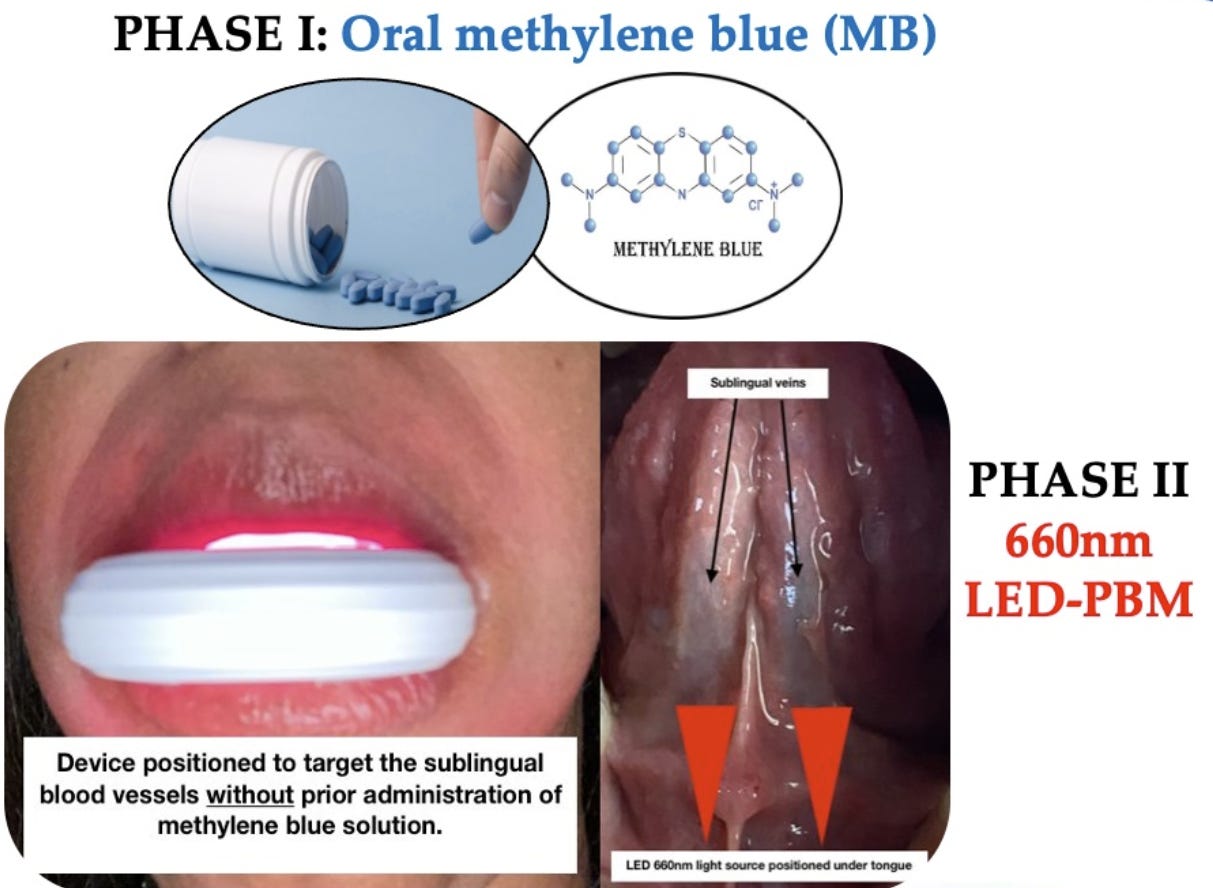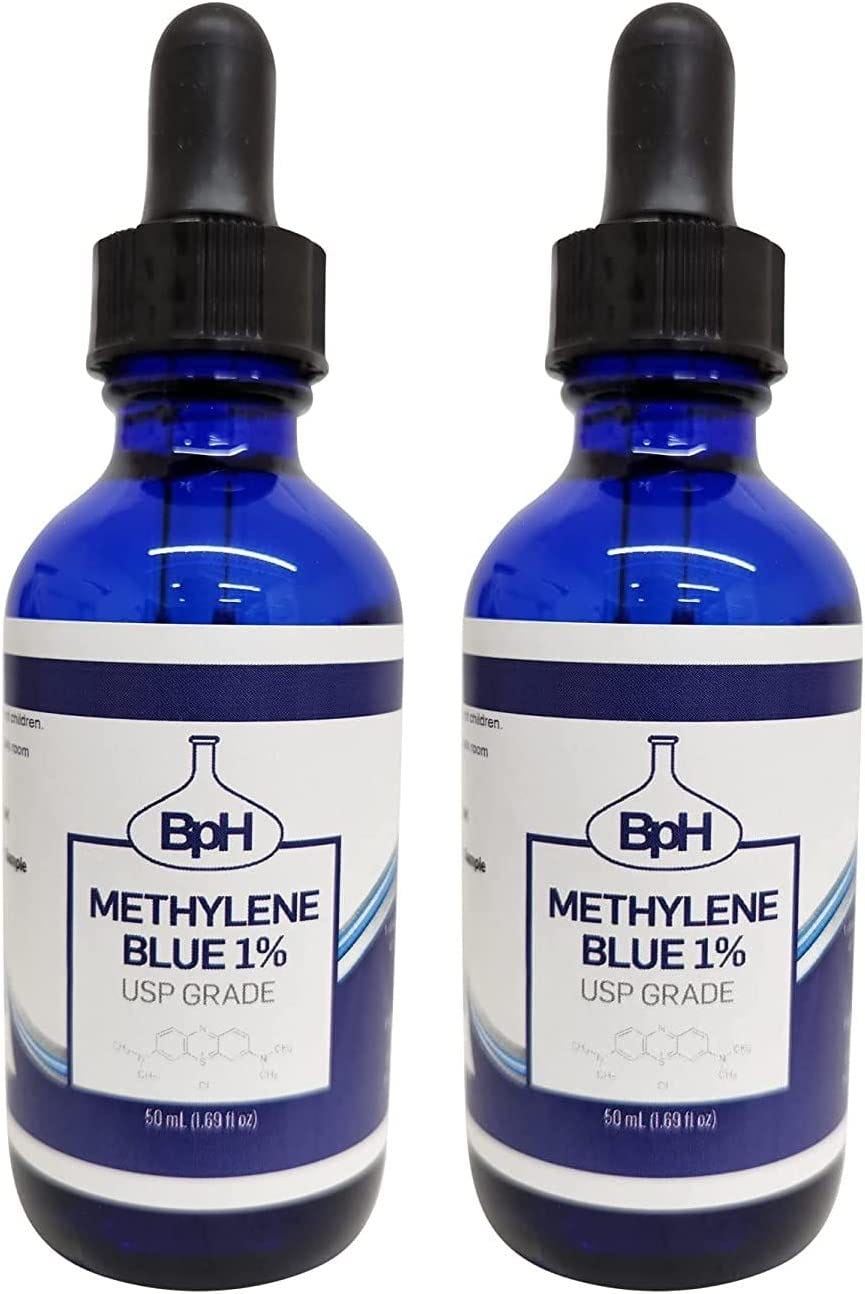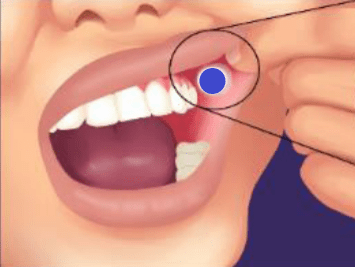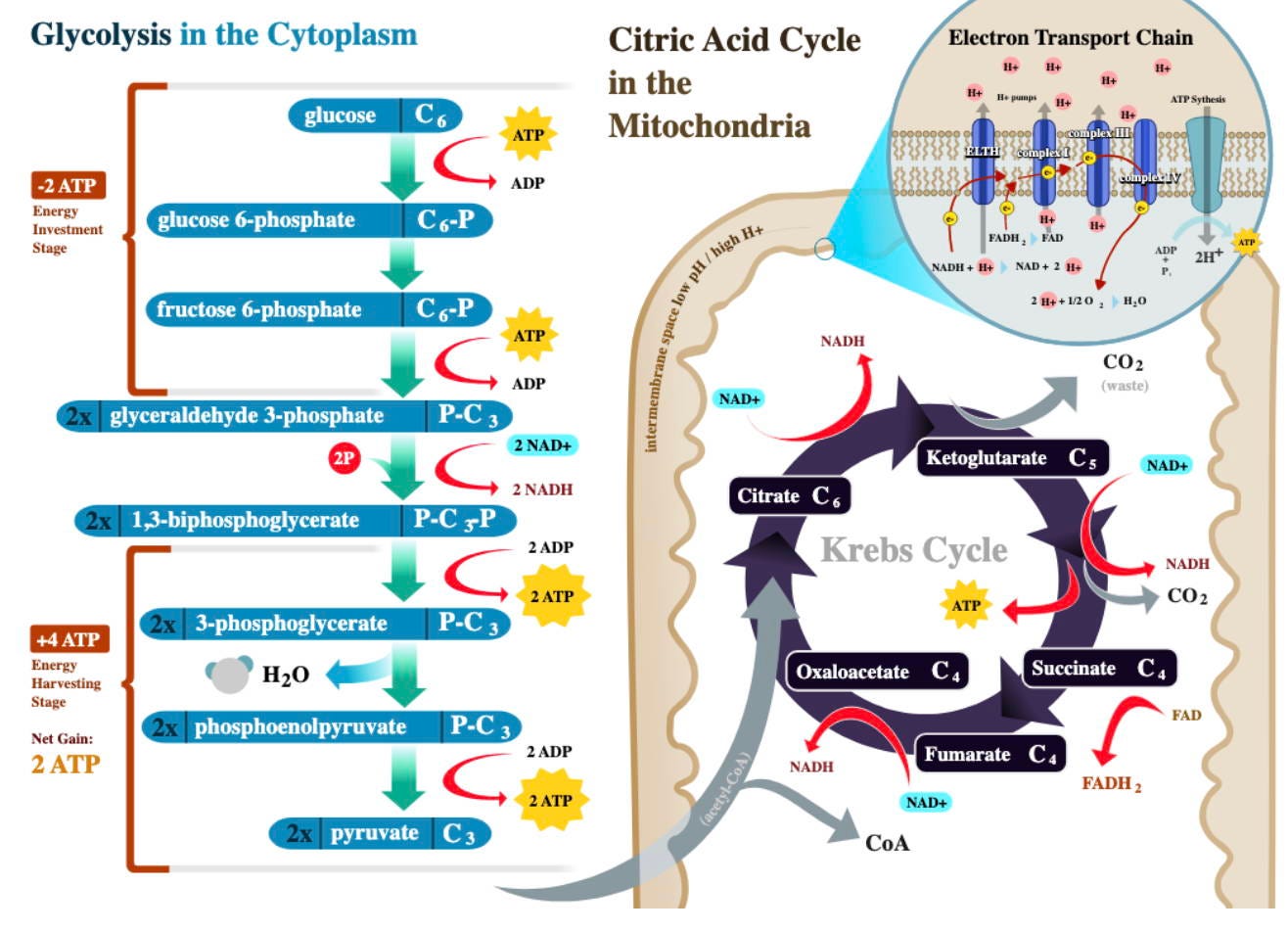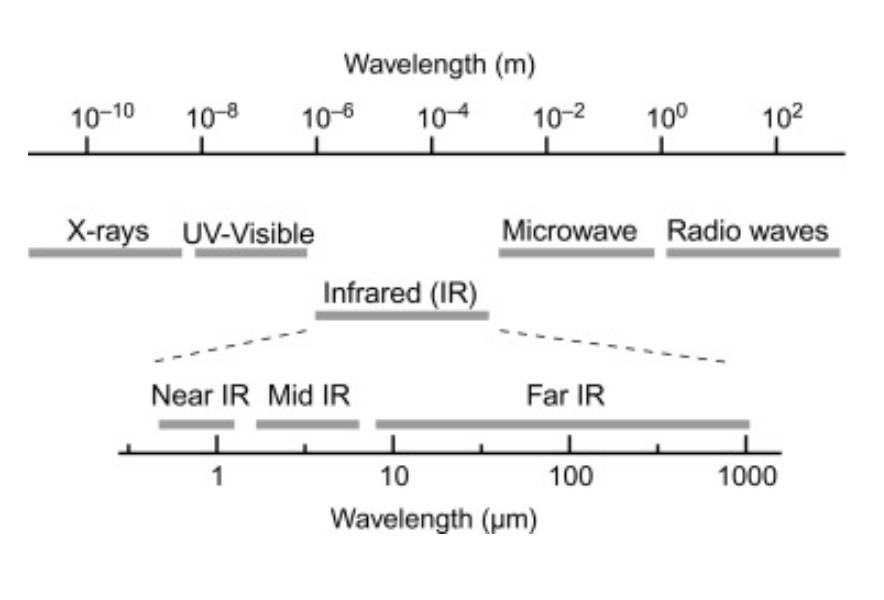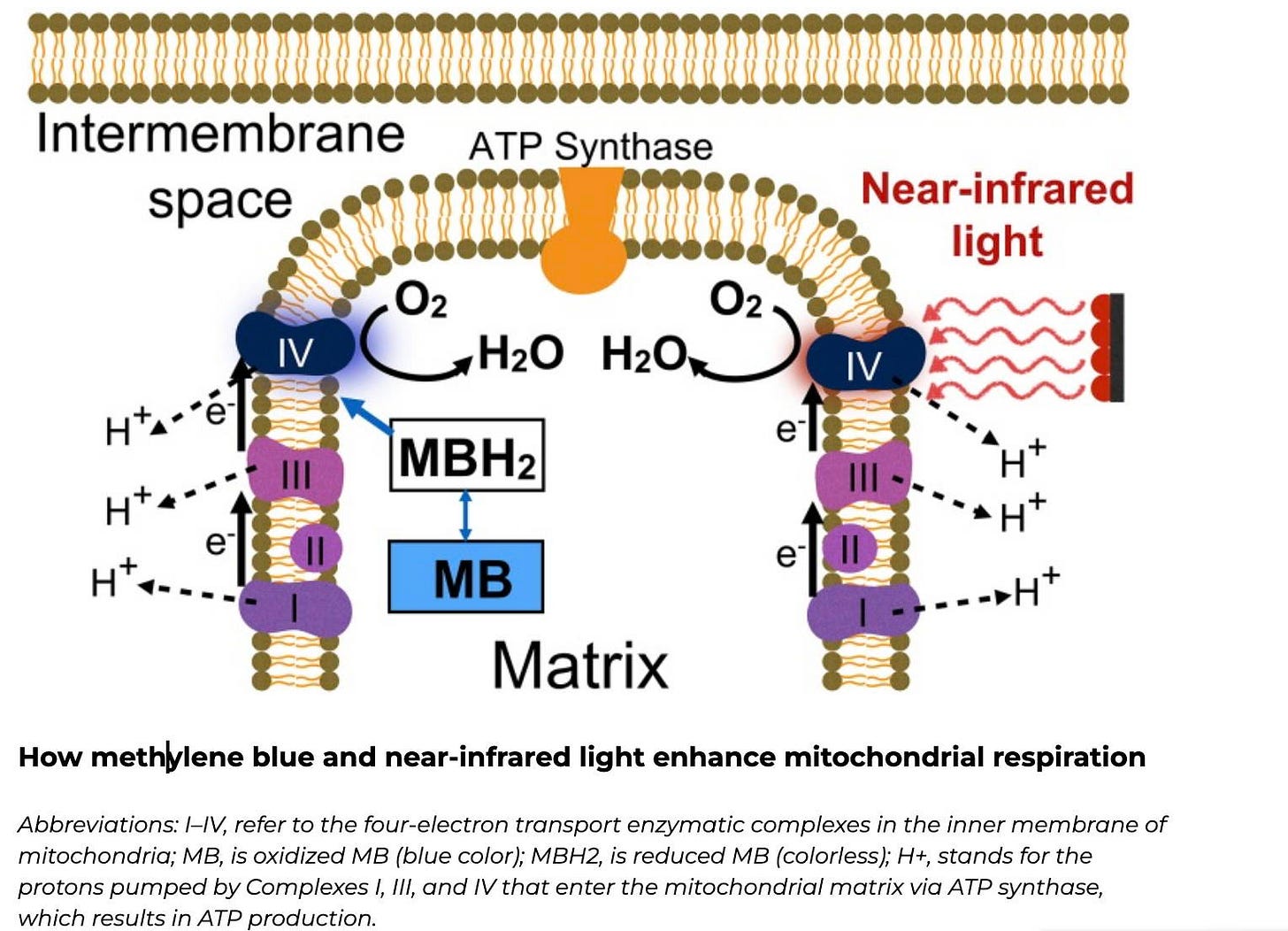Methylene Blue & Light Therapy
Last updated March 3rd, 2023. This post contains my casual thoughts about Methylene Blue. At some point in the future, I hope to write it into a full fledge article. I highly recommending reading elsewhere online for this topic if you’re interested.
What are the benefits of taking methylene blue?
“It improves mitochondrial efficiency and respiration, acts as an antioxidant, and increases brain cell lifespan, resulting in improved memory and mood. At low dosages, Methylene Blue is used to enhance mitochondrial function, increase cerebral blood flow, and acts as an antidepressant.”
“Methylene Blue crosses the brain barrier and enhances mitochondrial function by acting as both an electron doner and an electron acceptor.”
Combo Methylene Blue & Light Therapy Studies
Protection against neurodegeneration with low-dose methylene blue and near-infrared light
https://www.frontiersin.org/articles/10.3389/fncel.2015.00179/full
Methylene blue preferentially enters neuronal mitochondria after systemic administration, and at low-doses forms an electron cycling redox complex that donates electrons to the mitochondrial electron transport chain. Low-level near-infrared light applied transcranially delivers photons to cortical neurons that are accepted by cytochrome oxidase, which causes increased cell respiration and cerebral blood flow. Breakthrough in vivo studies with these interventions suggest that targeting mitochondrial respiration may be beneficial for protection against different types of neurodegenerative disorders.
A Novel Approach of Combining Methylene Blue Photodynamic Inactivation, Photobiomodulation and Oral Ingested Methylene Blue in COVID-19 Management: A Pilot Clinical Study with 12-Month Follow-Up
Ultraviolet radiation protection potentials of Methylene Blue for human skin and coral reef health
Methylene Blue Studies (Will add more over time)
The Potentials of Methylene Blue as an Anti-Aging Drug
The only medicine I keep on standby at all times, since I use ionizers and light therapy for basically everything, is blue food coloring aka methylene blue. I refer to it as my emergency electrons when I used to get super sick with my long Covid. Negative ions work great but it can take a few days/weeks for the effect to take effect. So if I needed emergency electrons, I would sublingual administer pharmaceutical grade blue food coloring under my tongue. And this helped a lot when my long Covid got bad. I haven’t taken it at all since July 2022. I don’t expect to need it again for long covid as I still feel it is in remission. The last bottle I got was from Amazon for about $30. Otherwise as a normal day to day supplement, I think it has benefits. Despite me not needing it for long covid anymore, I can see myself taking it in the future as like a vitamin. To my knowledge, it is very easy to overdose on if you take it in liquid/sublingual form.
For what it’s worth, I plan on having an emergency standby bottle of methylene blue for the rest of my life. That’s how important it was to me during my worse days of long Covid and how much it helped. It worked instantly whenever I got hypothermia after eating. Which to me, is the weirdest long covid symptom of all time and I still don’t understand how or why that happened to this day.
Methylene Blue has to be sublingually administered because if you swallow it, it’s not bio available. Troscription, which is in pill like form, recommends putting it between your cheeks and gums to absorb into the blood stream.
Methylene Blue can mess up your oximeter readings if you take it. Your urine will also change colors to a neon yellow/green.
Not a referral link, this is what I last purchased, I cannot confirm it is suitable. But it has worked for me.
https://www.amazon.com/Methylene-Laboratory-Methylthioninium-Supplement-Formaldehyde/dp/B09J1JRSLC
This video was taken April 2021/uploaded May 2021…. As you can see, my tongue is blue. This is normal/expected when using this supplement daily.
Troscription is very expensive but it appears to be the only mainstream available source of Methylene Blue. I use off brands on amazon but I am fully aware these products may not be pharmaceutical grade/could contain toxic materials. I copied and pasted the article below for further reading for now.
https://troscriptions.com/blogs/main/methylene-blue-and-red-light-the-colors-of-neuroprotection
BLUE: DID YOU KNOW THAT BESIDES STAINING OUR TONGUES BLUE AND TURNING ON SMURF MODE, METHYLENE BLUE (MB) HAS BEEN HISTORICALLY USED IN BIOCHEMISTRY AS A DYE FOR MICROBES AND BLOOD SMEARS? (A SPHINCTER SAYS) WHAT!?* IS MB ACTUALLY GOOD FOR US? OR IS IT DANGEROUS?
RED: Did you know that infrared light is a specific spectrum of electromagnetic radiation that has a longer wavelength than what is visible to the human eye? Infrared is part of the natural sunlight and also can be artificially produced by laser or LED technology. How can it help us? And, does it have any risks?
Keep reading to find out not only the answers to these questions but to also discover how these two biohacks work together in amazingly synergetistic ways.
Plus, we have teamed up with Heal With Heat - Clearlight Saunas who have amazing redlight devices and saunas for you to get maximum benefit with methylene blue. See the end of article for more info!
Okay first up! Let’s take a quick tour of the electron transport chain in your mitochondria and learn how they are vital to our cognitive performance (or lack thereof).
The main function of mitochondria is to be the “powerhouses” of our cells. They are in charge of creating packs of energy called ATP molecules from food and oxygen. The cells in our body that require the most oxygen also have the highest number of mitochondria. In addition to your heart, liver, and muscles, your brain is one of your most energy-intensive locales, requiring at least 20% of our total body oxygen at all times.
The energy stored in the food we eat enters the cell in the form of glucose, which is transformed to enter the mitochondria as acetyl-CoA to then become part of the Krebs cycle that is ultimately coupled to the respiratory chain to produce energy in the form of ATP. In this process, the mitochondria need electrons and protons to convert oxygen into water molecules. As this process will be limited by the availability of these electrons and protons, the more of them we have available, the more energy our mitochondria will be able to produce, and faster.
HOW METHYLENE BLUE WORKS IN THE BRAIN
In the biochemistry lab, MB is used to stain live cells by donating electrons to receptor molecules such as oxygen, which is dissolved in the water. If the cell is alive, the oxygen within the cell will receive these electrons, and the cells will become blue. However, if the cell is dead, there will be no oxygen to receive the electrons, and within a few seconds to minutes, the cell will turn (almost) colorless. Cool, right?
With that same principle, when we give MB to our mitochondria, it will donate its electrons to the electron transport chain [1], which is directly involved in oxygen consumption, energy production, and cell metabolism. Interestingly, MB has auto-oxidizing properties that allow it to serve as an electron cycler, acting as both an electron donor and acceptor. And when it accepts electrons, it turns colorless!
In low, controlled concentrations, MB can stimulate mitochondrial respiration by enhancing the shuttling of electrons between electron transport chain (ETC) protein complexes in the mitochondrial matrix (specifically complexes III and IV). In addition, MB also enhances the function of complex IV.
The final electron acceptor on the ETC is, of course, is oxygen. Then, oxygen is reduced to water in a reaction catalyzed by the mitochondrial enzyme cytochrome c oxidase or complex IV (keep this enzyme in mind as we’ll come back to it), which is coupled with the synthesis of ATP by ATP synthase.
Some of the cells with the highest number of mitochondria and oxygen consumption rates are neurons and other brain cells. Boosting mitochondrial activity to produce more ATP can prevent neurodegeneration, help with cognitive performance, memory, and depression, and boost attention and focus. MB has even shown promising results for neurodegenerative conditions such as stroke, global cerebral ischemia, Alzheimer’s disease, Parkinson’s disease, and traumatic brain injury [2].
You can read more about the history of MB, how it can optimize our health, its mechanism of action, and safety in thispost.
THE EFFECT OF NEAR-INFRARED LIGHT ON MITOCHONDRIA
With the human eye, we can only see light with wavelengths between 380 and 700 nm, which is the visible spectrum. Red light falls at the end of that spectrum, with longer wavelengths between 630 and 700 nm. Beyond 700 nm, we can’t see the red light, but we can feel the energy in the form of heat, which is where infrared starts. The range between 600 and 1200 nm is considered the ‘therapeutic window‘ of energy that will have a positive effect on our cells without damage. Infrared light strictly ranges from 780 nm to 1000 μm, which is a much longer wavelength than that of the visible spectrum. Within the spectrum of infrared light, near-infrared (NIR) ranges from 780 to 2500 nm.
Considering the whole light spectrum, the longer the wavelength of the light, the deeper it can penetrate into the body. For example, UV light, due to its short wavelength, can only act on the surface, while blue, green, and red light have increasing wavelengths and, therefore, can penetrate deeper into the skin and the underlying connective tissue. Near-infrared (NIR) light has the capacity to penetrate through the skin and connective tissue, to ultimately reach the muscles or even the brain [3].
This approach has been therapeutically used to treat pain and inflammation and is commonly known as low-level laser therapy (LLLT) or photobiomodulation, which includes mainly the red-to-near-infrared optical region between 620 and 1,150 nm. Through forehead transcranial stimulation of the human cerebral cortex, photons in the red-to-near-infrared frequency range can penetrate the brain. In this process, the energy (as photons) from this specific wavelength of light is absorbed by molecules that allow a photochemical reaction to take place. This bioenergetics process is called photoneuromodulation [4], where photon packs of energy from electromagnetic waves are absorbed by an enzyme.
In the mitochondria, low-level red-to-near-infrared light directly impacts the mitochondrial electron transport chain by becoming a photon donor [1] (remember that MB was an electron donor?) to cytochrome c oxidase or complex IV (remember this one?), which results in increased cytochrome oxidase enzymatic activity and oxygen consumption.
In the brain, low-level near-infrared light has neurological and psychological applications [4]. Directional low-power and high-fluency monochromatic (or quasi monochromatic) light from lasers or LEDs in the red-to-near-infrared wavelengths is applied transcranial to modulate the function of neurons or produce a therapeutic effect without destroying the tissue or creating heat.
This process delivers photons to neurons in the cerebral cortex, which increases brain blood flow as well as cell respiration and ATP production rates in neurons. NIR light can enter brain mitochondria and directly photostimulate cytochrome oxidase activity, independent of the electrons derived from food. This therapeutic approach has been used to protect against neurodegenerative disorders, and it has shown long-term benefits lasting even two-to-four weeks after the session due to its effects on cytochrome oxidase gene expression.
Scientific research has shown that transcranial NIR laser therapy improves cell survival, memory, and metabolism [5]. It has neuroprotective effects that can help treat brain pathological conditions induced by neuroinflammation [6], as well as conditions such as epilepsy [7], pathological fear [8], and mitochondrial optic neuropathy [9]. This therapeutic approach can also benefit the aging brain by improving cognitive functions [10] such as attention, learning, memory, and mood, modultate the inflammatory response and brain blood flow [11], and also improve oxidative stress metabolism[12]. It has also shown cognitive and emotional effects in humans [13]. In practical terms, these different studies used wavelengths that ranged from 660 to 1,064 nm.
METHYLENE BLUE, INFRARED LIGHT, AND THE MITOCHONDRIA IN THE BRAIN
Holy synergy! Although MB and red light aren administered in very different ways, they both seem to share a mechanism of action: enhancing the electron transport chain in the mitochondria [1]. MB has a biochemical effect, while NIR light has a biophysical effect. While MB donates electrons, NIR light donates photons. MB is administered orally and reaches the brain through the bloodstream, whereas infrared light is applied transcranially. But in the end, they both enhance cellular metabolism and oxygen consumption to produce energy and, therefore, have neuroprotective effects against cognitive decline.
Both are also cost-effective and, if carefully administered (read this post on thesafety of methylene blue), have virtually no side effects.
So, let's understand this process on a molecular level. According to researchers Gonzalez-Lima and Auchter [16], who have been working on NIR light therapy for almost 15 years, low-dose MB is an exogenous electron cycler, boosting oxygen consumption and cell respiration (molecular O2 reduced to H2O). Low-level red-to-near-infrared light directly energizes cytochrome c oxidase (complex IV) via photon absorption, facilitating its catalytic activity and leading to the up-regulation of cytochrome oxidase levels. These interventions result in long-term increases in the amount of cytochrome c oxidase in the electron transport chain through enzymatic induction, which promotes oxidative energy metabolism and neuronal survival.
Both therapeutic interventions upregulate mitochondrial respiration with similar properties such as energy transfer and enhanced metabolic energy production, which ultimately helps your brain make more energy..
There are other similarities between these two interventions:
Both increase the expression of the cytochrome oxidase gene in the brain.
Both have high bioavailability: MB can cross the blood-brain barrier, build up inside neurons, and accumulate in living mitochondria, while NIR lasers used transcranially have a degree of penetration that increases with longer wavelengths and pulse durations within the effective NIR spectrum range.
They both share a hormetic response, meaning that low doses produce beneficial effects, as opposed to high doses that are toxic. Hence, low doses are both safe and incredibly effective.
This research has shown, both in animal modelsin vivo and human studies, that low-dose methylene blue and low-level NIR light both enhance mitochondrial respiration and protect against neurodegeneration [16]. The scientific evidence is growing, and, most importantly, the authors of these studies don’t have financial or commercial relationships that may bias these results.
In addition, you can bundle these two interventions with a nutritional approach to improve mitochondrial respiration by increasing ketone bodies in the diet [14].
So, based on this evidence, you’ve got an amazing one-two punch: First, optimize your mitochondria with pharmaceutical-grade methylene blue fromTroscriptions, which is tested for purity and potency. It will boost your energy levels, enhance your memory, improve focus, and protect your brain.
And second if you bundle it up with near-infrared light, there will likely be massive synergy.
Plus, if you decide to add some other awesome strategies such as breathwork to increase oxygen availability or a nutritional approach to increase ketone production…the sky is the limit (i.e. uou are basically, limitless).
Ready to give the combo a go? Buy our productshere, grab our favorite lights here (or get out in the sun) and feel the difference!
REFERENCES
[1] Gonzalez-Lima F, Auchter A. Protection against neurodegeneration with low-dose methylene blue and near-infrared light. Frontiers in Cellular Neuroscience 2015;9.https://doi.org/10.3389/fncel.2015.00179.
[2] Tucker D, Lu Y, Zhang Q. From Mitochondrial Function to Neuroprotection – An Emerging Role for Methylene Blue. Molecular Neurobiology 2018;55.https://doi.org/10.1007/s12035-017-0712-2.
[3] Henderson TA, Morries LD. Near-infrared photonic energy penetration: can infrared phototherapy effectively reach the human brain? Neuropsychiatric Disease and Treatment 2015;11.https://doi.org/10.2147/NDT.S78182.
[4] Rojas JC, Gonzalez-Lima F. Neurological and psychological applications of transcranial lasers and LEDs - PubMed. Biochemical Pharmacology 2013;86.https://doi.org/10.1016/j.bcp.2013.06.012.
[5] Cardoso FDS, Mansur FCB, Lopes-Martins RÁB, Gonzalez-Lima F, Gomes da Silva S. Transcranial Laser Photobiomodulation Improves Intracellular Signaling Linked to Cell Survival, Memory and Glucose Metabolism in the Aged Brain: A Preliminary Study. Frontiers in Cellular Neuroscience 2021;15:683127.https://doi.org/10.3389/fncel.2021.683127.
[6] Cardoso FDS, Salehpour F, Coimbra NC, Gonzalez-Lima F, Gomes da Silva S. Photobiomodulation for the treatment of neuroinflammation: A systematic review of controlled laboratory animal studies. Frontiers in Neuroscience 2022;16:1006031.https://doi.org/10.3389/fnins.2022.1006031.
[7] Cardoso F dos S, Gonzalez-Lima F, Coimbra NC. Mitochondrial Photobiomodulation as a Neurotherapeutic Strategy for Epilepsy. Frontiers in Neurology 2022;13.https://doi.org/10.3389/fneur.2022.873496.
[8] Zaizar ED, Papini S, Gonzalez-Lima F, Telch MJ. Singular and combined effects of transcranial infrared laser stimulation and exposure therapy on pathological fear: a randomized clinical trial - PubMed. Psychological Medicine 2021.https://doi.org/10.1017/S0033291721002270.
[9] Rojas JC, Lee J, John JM, Gonzalez-Lima F. Neuroprotective effects of near-infrared light in an in vivo model of mitochondrial optic neuropathy. The Journal of Neuroscience : The Official Journal of the Society for Neuroscience 2008;28:13511–21.https://doi.org/10.1523/JNEUROSCI.3457-08.2008.
[10] Cardoso FDS, Gonzalez-Lima F, Silva SG da. Photobiomodulation for the aging brain - PubMed. Ageing Research Reviews 2021;70.https://doi.org/10.1016/j.arr.2021.101415.
[11] Cardoso FDS, Mansur FCB, Araújo BHS, Gonzalez-Lima F, Silva SG da. Photobiomodulation Improves the Inflammatory Response and Intracellular Signaling Proteins Linked to Vascular Function and Cell Survival in the Brain of Aged Rats - PubMed. Molecular Neurobiology 2022;59.https://doi.org/10.1007/s12035-021-02606-4.
[12] Cardoso FDS, Barrett DW, Wade Z, Gomes da Silva S, Gonzalez-Lima F. Photobiomodulation of Cytochrome c Oxidase by Chronic Transcranial Laser in Young and Aged Brains. Frontiers in Neuroscience 2022;16:818005.https://doi.org/10.3389/fnins.2022.818005.
[13] Barrett DW, Gonzalez-Lima F. Transcranial infrared laser stimulation produces beneficial cognitive and emotional effects in humans - PubMed. Neuroscience 2013;230.https://doi.org/10.1016/j.neuroscience.2012.11.016.
[14] Gonzalez-Lima F, Barksdale BR, Rojas JC. Mitochondrial respiration as a target for neuroprotection and cognitive enhancement - PubMed. Biochemical Pharmacology 2014;88.https://doi.org/10.1016/j.bcp.2013.11.010.
Please let me know if you have any questions =)


